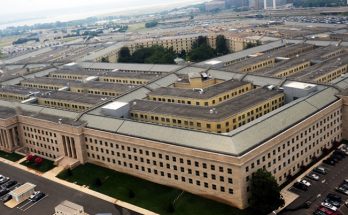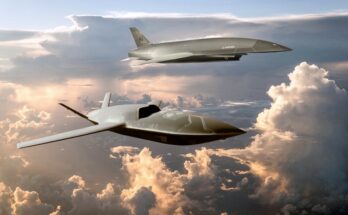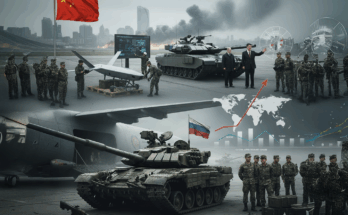
On January 25, 2023, the Biden administration announced it will transfer 31 M1 Abrams main battle tanks and eight M88A2 HERCULES armored recovery vehicles to Ukraine, in an emergency aid package worth $400 million. On the same day, the German government announced it will initially transfer 14 Leopard 2 tanks to Ukraine and allow other NATO allies to likewise transfer Leopard 2s to Ukraine. These announcements represent the conclusion of months of wrangling between NATO members over the transfer of high-end main battle tanks to Ukraine. Poland has been pressing Germany for permission to transfer Polish Army Leopard 2s to Ukraine. As the German firm Krauss-Maffei Wegmann (KMW) produces the Leopard 2, such a Polish action would require German consent.
The Biden administration claims Ukraine can expect to receive “hundreds” of tanks. However, no further details were provided.
The tank force of the Russian Army in Ukraine consists primarily of T-72, T-80 and T-90 tanks. The T-72, T-80 and T-90 share a number of common basic design elements, and are equivalent in terms of combat capability and survivability. Indeed, the T-90 is essentially a late-model T-72 hull and turret, integrating the newer V-84 MS diesel engine and the advanced turret components of the latest T-80U. Facing the Russian invasion has been a mixed force of Ukrainian tanks, consisting of T-54/55s, T-62s, T-64s, T-72s, T-80s and T-84s (theT-84 is a Ukrainian development of the Russian T-80UD).
While open-source reporting regarding tank-on-tank engagements in Ukraine has been scarce, it has to this stage been really a moot point. Both the Russians and Ukrainians have been using essentially the same tanks against each other. Nevertheless, Russian losses thus far have been staggering. Analysis of open-source reporting suggests the Russian Army has thus far lost at least 1,640 tanks of the estimated 3,300 deployed to Ukraine. In the midst of the fighting, the Ukrainian Army has actually managed to increase its tank inventory, thanks to its recovery of Russian tanks abandoned in the field.
Transfers of M1 Abrams and Leopard 2 main battle tanks, even in limited numbers, represent a significant escalation of the combat situation in Ukraine.
In 1991, after a mere 100 hours of ground combat in Iraq, we learned conclusively that the Iraqi T-72s simply were not even in the same league as the Abrams and the British Challenger. During Operation Desert Storm, the Abrams and Challenger proved capable of engaging and destroying T-72s beyond the range of the T-72’s 125mm 2A64M main gun, enabling American and British tank crews to pick off T-72s at long range with impunity. In fact, an FV4034 Challenger achieved a kill at over 5,100 meters (5,577.4 yd, or 3.17 mi), the farthest known tank-versus-tank kill in history.
In close combat, the T-72 fared no better. Abrams and Challenger crews engaged, maneuvered against, and defeated T-72s faster than the Iraqi tank crews could react. During the battle of 73 Easting (February 26, 1991), elements of the U.S. Army’s 2nd Armored Cavalry Regiment – including approximately 36 M1A1 Abrams tanks – defeated two Iraqi armored brigades in close combat. In the battle, the 2nd ACR lost no Abrams tanks and only one M2 Bradley Fighting Vehicle to enemy fire. The Iraqi Army lost 160 tanks, 180 personnel carriers, 12 artillery pieces, and 80 wheeled vehicles.
Clearly, facing an American Abrams or British Challenger in a Russian-made T-72 proved little better than bringing a knife to a gun fight. There is hardly any reason to assume today’s Russian tanks – which include what are essentially upgraded versions of the same old T-72 – would fare any better. While the British have not pledged Challenger 2 tanks to Ukraine as of yet, the German Leopard 2 is fully equivalent to the American Abrams and British Challenger 2 in terms of combat capability and survivability.
However, there are a number of serious unanswered questions regarding these main battle tank transfers to Ukraine.
The logistical challenges are enormous. NATO members claim the Leopard 2s will require minimal turnaround time for shipment to Ukraine, while transfers of Abrams tanks will take months. Regardless of shipping time, however, the fact remains that a sophisticated logistical infrastructure – including maintenance, spare parts, fuel, lubricants and ammunition – will have to be established from scratch in Ukraine to support these tanks. And this logistical support infrastructure must be established before the first Leopard or Abrams can roll into combat.
Further, Ukrainian personnel must be trained to operate, maintain and effectively employ these tanks. That level of training simply does not happen overnight. Even the most sophisticated weapon in the world is utterly useless in untrained (or poorly trained) hands.
Then there is the delicate question of confidence and trust in the Ukrainian armed forces. Thus far, most arms transfers to Ukraine have involved systems not nearly as sensitive as the Abrams and Leopard 2, which represent the current pinnacle of main battle tank technological sophistication. Even larger weapon systems such as the HIMARS multiple launch rocket system are basically standoff systems that can be quickly evacuated from the battlefield if the tactical situation suddenly turns sour. The main battle tank, by definition, is a frontline weapon system that meets the enemy toe-to-toe. One must ask just how eager the U.S. Army and the German Bundeswehr are to risk the possibility of the Russians getting their hands on an Abrams or Leopard 2.
Do these training and confidence issues suggest the Abrams and Leopard tank crews may not (at least initially) be Ukrainian? Let’s table that discussion for another time . . . .
While this announcement represents a significant milestone for the United States and Germany and their NATO allies regarding the war in Ukraine, the fact remains that there more questions than answers at this point. The availability of Abrams and Leopard 2 main battle tanks is not the issue. The questions of logistics, training, combat employment and trust have yet to be answered. For now, we must wait and see if these transfers prove to be a tactical master stroke or a colossal blunder.
Forecast International’s Military Vehicle Forecast provides long-range forecasts on tanks, light tracked and wheeled vehicles, tactical logistics vehicles, and engineering vehicles. The M1 Abrams, Leopard 2, M88A2, M998 Series HMMWV, MRAP, and AAV7/LVTP7 – these are just a sampling of the vehicles featured in this product. An annual subscription includes 81 individual reports, most with a 10-year unit production forecast. Click here to learn more.
Dean is responsible for Military Vehicles Forecast and Ordnance & Munitions Forecast. Prior to joining Forecast International, Dean served as an intelligence analyst in the U.S. Army for 10 years. As an Order of Battle and weapons specialist, he served in a variety of assignments, ranging from running the intelligence section of an Apache attack helicopter squadron in combat to representing a theater-level intelligence organization in a national-level interagency intelligence working group. His intelligence assignments have included duty in Japan, Korea, the Netherlands, Germany, Turkey and Iraq, as well as Fort Hood, Texas, and Norfolk, Virginia.




